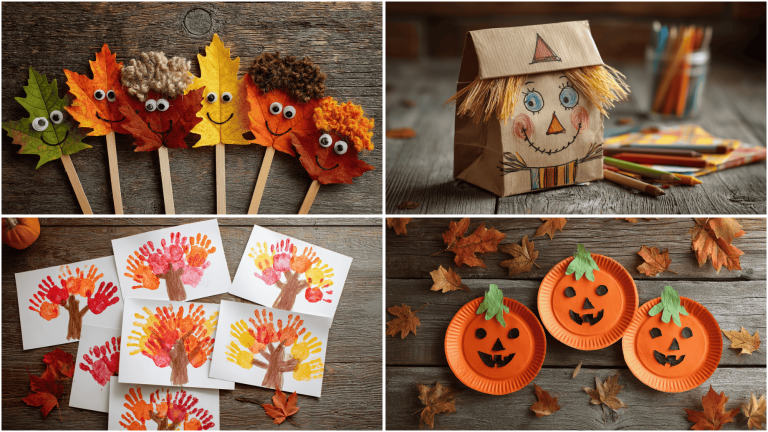20 Fun & Learning Activities for 18-Month-Olds

That moment when an 18-month-old finds the kitchen cabinets? Pure chaos meets pure joy.
Toddlers at this age are like tiny scientists on a mission. They touch, taste, throw, and test everything around them. Parents often wonder how to channel their child’s energy into something that helps them learn and grow.
The good news? Learning doesn’t need fancy toys or complicated setups. Some of the best activities can be done with items already around the house.
A cardboard box becomes a fort. Wooden spoons turn into drumsticks. Even sorting socks can become a game.
This stage is special because toddlers are developing numerous new skills simultaneously. They’re learning to walk, talk, and think in ways that shape their worldview.
Simple activities can support this growth while keeping everyone happy and engaged.
Why 18 Months Is a Milestone Age
At 18 months, toddlers undergo rapid developmental growth, setting the stage for early childhood.
Physically, many are confidently walking, climbing, and exploring their environment with increased balance and coordination.
Language also leaps, with vocabulary bursts and simple word combinations beginning to emerge.
Emotionally and socially, toddlers engage in imitation and pretend play, reflecting a growing awareness of others and their own identity. These changes make targeted play essential.
Activities that promote fine motor skills, such as engaging in pretend scenarios and solving basic problems, not only entertain but also help strengthen cognitive, emotional, and physical abilities.
At this age, every block stacked or animal sound mimicked isn’t just play; it’s foundational learning in action.
Motor Skill Boosters (Gross & Fine)

Encouraging motor development through playful movement sets the stage for balance, coordination, and control. These hands-on activities support both gross and fine motor skills in a fun and engaging way.
1. Soft Obstacle Course
Creating a mini course with pillows, tunnels, and cushions lets toddlers crawl, climb, and stretch. It improves their sense of balance and strengthens core muscles. The safe environment also builds body awareness.
Pro tip: Use colorful objects or toys to guide the toddler through the course.
2. Push-and-Pull Toys
Toys like mini wagons or animal pull toys boost walking confidence and posture. They help toddlers pace themselves while guiding them around obstacles. The back-and-forth motion strengthens leg muscles and coordination.
Pro tip: Use toys with slight resistance to encourage stronger push-pull control.
3. Stacking Cups or Blocks
Stacking promotes hand precision, problem-solving, and spatial reasoning. Toddlers learn to balance and fit shapes together, practicing control and accuracy as they work. It’s also a quiet, focused way to develop persistence.
Pro tip: Offer a mix of textures and sizes to enhance sensory learning.
4. Finger Painting with Non-Toxic Paint
Allowing toddlers to explore colors with their fingers helps build fine motor strength and creativity. The squeezing, smearing, and swirling motions improve grip and coordination. It’s also a great way to express emotions.
Pro tip: Tape the paper down to prevent it from moving while they paint.
Language Learning Through Play

Toddlers absorb language best when it’s woven into play. Simple, repetitive, and engaging activities spark curiosity while naturally building communication skills.
5. Story Time with Interactive Books
Books with textures, flaps, or sounds invite your child to touch, interact, and express themselves.
These books create a multi-sensory experience that boosts focus and vocabulary. Choose simple stories with animals, everyday scenes, or favorite characters.
Pro Tip: Pause during reading to let your child finish a word or point to a picture.
6. Name That Object Game
Walk around the house and point to everyday objects, clearly naming each one as you go. This game helps toddlers associate words with real-world items. Repetition over time builds word recognition and confidence.
Pro Tip: Add fun by asking, “Where’s the spoon?” and let them point or fetch it.
7. Sing-Along Sessions
Songs with repetition and rhythm, like “Old MacDonald” or “Wheels on the Bus,” aid memory and pronunciation.
Singing encourages toddlers to mimic new sounds and words with joy and enthusiasm. Keep hand motions and exaggerated expressions for extra fun.
Pro Tip: Repeat favorite songs often to help with word retention and participation.
8. Animal Sound Imitation
Make learning playful by acting out animal sounds and matching them to pictures or toys. Kids learn to connect auditory cues with visual references. It also boosts expressive language and listening skills.
Pro Tip: Use a toy farm or flashcards to make the activity even more engaging.
Cognitive Development Activities

At 18 months, little ones are eager to test out their problem-solving and thinking skills. These playful activities are excellent for developing memory, focus, and early reasoning skills.
9. Shape Sorters & Puzzles
Toddlers learn to match shapes, which improves their logical thinking and visual memory.
These tools encourage hand-eye coordination while teaching fundamental problem-solving skills. Watching them fit that last piece is a joy for both parent and child.
Pro Tip: Use puzzles with large knobs or bright colors to keep their attention longer.
10. Cause-and-Effect Toys
Toys with buttons, switches, and pop-ups help toddlers understand that actions have specific outcomes. This builds early understanding of how the world works. It’s also great for teaching persistence and patience.
Pro Tip: Narrate each action,“You pushed the button, and it popped up!”,to build language too.
11. Pretend Play Scenarios
Setting up tea parties or toy kitchens supports symbolic thinking and social role-play. These playful scenes help toddlers mimic daily life and boost creativity. It also encourages them to express emotions and thoughts.
Pro Tip: Let your child lead the play,it builds confidence and storytelling skills.
12. Treasure Hunt in a Box
Fill a bin with shredded paper or scarves and hide small toys inside. Children love exploring textures to discover hidden treasures. This builds memory, focus, and sensory exploration.
Pro Tip: Ask them to name or describe the toy when they find it to boost vocabulary.
Sensory Play Ideas for Exploration

Sensory play sparks curiosity and builds essential brain connections by engaging the senses of touch, sight, sound, and movement. These playful experiences help toddlers make sense of the world in a hands-on way.
13. Water Play with Cups and Spoons
Pouring, scooping, and splashing water help toddlers explore volume, cause-and-effect relationships, and motor coordination. They can experiment with floating objects and observe the flow of water. This simple setup builds focus and control.
Pro tip: Add a few drops of food coloring or safe scents like lemon for extra sensory fun.
14. Sensory Bins
Fill a shallow bin with dry rice, oats, or pasta and hide small toys inside. Toddlers love digging, pouring, and discovering surprises. It encourages the development of fine motor skills and imaginative play.
Pro tip: Rotate materials weekly to keep the experience fresh and exciting.
15. Texture Walks
Create a path using varied textures, such as grass, rubber mats, and sandpaper, for toddlers to walk on barefoot. This activity builds tactile awareness and balance. It also boosts sensory confidence.
Pro tip: Try it indoors too, using fabric scraps, bubble wrap, or sponges.
16. Bubble Time!
Chasing, popping, and watching bubbles improve visual tracking and body coordination. It’s a joyful way to stimulate movement and response. Toddlers also practice turn-taking and social interaction.
Pro tip: Blow bubbles at different heights to encourage jumping and stretching.
Social-Emotional Learning Activities

These activities help toddlers build emotional awareness, express feelings, and form stronger bonds with caregivers and peers.
Through play and gentle guidance, children begin to understand empathy, identity, and regulation in meaningful ways.
17. Mirror Play
Toddlers enjoy watching themselves in the mirror while mimicking different facial expressions.
This activity nurtures self-awareness and helps them recognize emotional cues. Make it playful by naming the emotions together.
Pro Tip: Use a safe, child-friendly mirror at eye level to encourage spontaneous interaction.
18. Stuffed Animal Conversations
Using stuffed toys for simple dialogues helps toddlers project and express their feelings. You can guide the play with prompts like “Bear looks sad, why do you think so?” This fosters empathy and emotional vocabulary.
Pro Tip: Let the toddler take the lead in role-playing to understand their perspective better.
19. Dance & Freeze
Turn on music, dance together, and freeze when it stops. This playful game strengthens impulse control while encouraging laughter and connection. It’s a great way to combine emotional learning with physical activity.
Pro Tip: Incorporate feelings-themed songs or gestures (like “happy arms” or “sad face”) to strengthen emotional connections.
20. Photo Albums of Loved Ones
Looking at photos of family members helps toddlers recognize familiar faces and feel a sense of connection. Naming people in the pictures reinforces bonding and memory. It also offers comfort during times of separation.
Pro Tip: Laminate or print photos in a toddler-safe album they can flip through anytime.
Tips for Safe and Engaging Play
Creating a safe and enriching play environment helps toddlers explore confidently and learn freely. Simple precautions and wise toy choices go a long way in supporting healthy development.
- Always supervise play, especially during physical or pretend activities. Your presence ensures both safety and meaningful interaction.
- Childproof the play area with soft mats, outlet covers, and secured furniture to prevent injuries from falls or climbing.
- Choose age-appropriate toys with large parts that can’t be swallowed, free of sharp edges or detachable small pieces.
- Look for non-toxic materials in paints, plastics, and fabrics to avoid harmful exposure.
- Avoid overstimulation: too many toys, sounds, or flashing lights can overwhelm toddlers and hinder their ability to focus on play.
Keeping play simple, safe, and intentional makes it more effective and joyful for both the toddler and the caregiver.
Conclusion
That little tornado running around the house? They’re a learning machine in disguise.
Eighteen months is such a sweet spot for growth. Every block stacked, every crayon scribble, and every messy sensory bin session builds something important in those busy little brains.
Parents don’t need fancy toys or complex setups; simple activities work best. A cardboard box often beats expensive gadgets. The key is to follow their lead and stay playful.
Remember, some days will be hits, while others will be complete flops. That’s normal. Toddlers have their agenda, and that’s perfectly fine.
These activities aren’t just about keeping busy hands occupied. They’re developing fine motor skills, language abilities, and problem-solving skills that will serve them well in the future.
What’s been your toddler’s favorite activity lately? Please drop a comment below and check out our other activity blogs.






